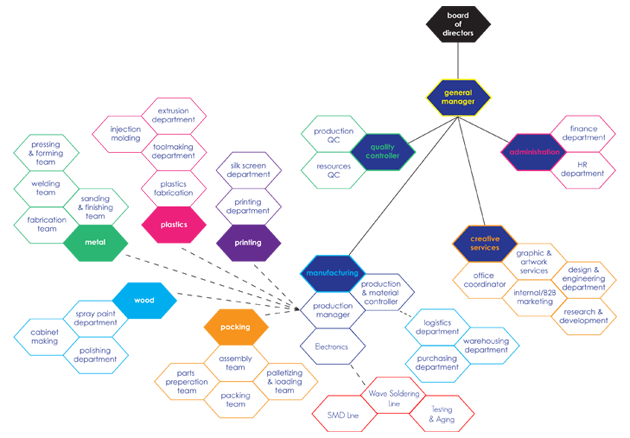Tips For Green Living
-
Going green all at once is too much for almost anyone to accomplish. Instead, try making just one new change or adding one new habit or resolve each week. You'll be surprised at how it adds up after just a year.
To get you started, here are 52 tips compiled from the P-I's weekly "Living Green" coverage:
- A laptop uses just a quarter of the power required by a desktop computer.
- Contaminants are tracked into homes on the soles of shoes. Consider becoming a shoe-free household. Clever designs for shoe storage near the front door can keep entries clutter-free and indoor air cleaner at the same time.
- Generating enough electricity to cook for an hour in a standard electric oven creates 2.7 pounds of carbon dioxide. Here's a list of what can do it for less: toaster oven, 1.3 pounds over 50 minutes; slow cooker, 0.9 pounds over seven hours; and microwave, 0.5 pounds over 15 minutes.
- If a vehicle's tires have less than recommended air pressure, gas mileage will suffer. Determine the correct pressure level from the small plaque likely found just inside the driver's-side door, but possibly on a rear doorpost, in the trunk/latch area, the glove box, or even on the sun visor.
- Wrapping a water heater with insulation can keep as many as 1,000 pounds of global-warming CO2 a year out of the upper atmosphere.
- Using cold water can save up to 80 percent of the energy required to wash clothes.
- Use safeclimate.net/calculator/ to determine how much your travel by car or plane fouls up the environment by spewing CO2 into the atmosphere.
- Some commercial air fresheners use chemicals that can be harmful to a baby's development. Instead, lightly spritz the place with vinegar.
- Vinegar will clean out deposits clogging a steam iron or coffeemaker.
- A cup of vinegar will clean a washing machine. Run it through a regular cycle -- but not with clothes.
- If using vinegar as a cleaning agent, pick the white variety. Brown will stain porous surfaces.
- To create a tub-scum cleaner, mix baking soda and a "green" liquid soap to a honey-thick consistency. Apply it with a little elbow grease and perhaps a splash of white vinegar.
- Save an average of $90 a year by shutting down a home computer every night. Also, shut it down if you don't expect to use it for the next two hours. Turn off the monitor if the lag is going to be at least 20 minutes.
- Refrigerators and freezer units account for one-sixth of a home's energy use, so select energy-efficient models when buying replacements.
- Fine-tune a refrigerator for optimum energy use by checking to see that the temperature in its main refrigeration box hovers at 37 degrees while the freezer stays at a relatively steady 3 degrees. A weather thermometer will do the trick.
- There are three household hazardous-waste drop-off sites in Seattle and Bellevue. For details and directions, see goto.seattlepi.com/r606 or phone the county's Household Hazardous Waste Line, 206-296-4692.
- If it's clear that a train or other barrier will block your vehicle for more than 30 seconds, turn off the engine. An idling vehicle burns more fuel than a simple restart. And you won't be polluting when the engine is off.
- Install a programmable thermostat that lets you automatically lower the temperature when no one is home or when the family is asleep. The Energy Star people say this device can save a family budget up to $150 a year. goto.seattlepi.com/r949
- Have a plugged or slow-draining sink? Search a hardware store's plumbing shelves for a bacteria-based product. Its goal is to establish colonies of goop-eating, human-friendly bacteria that are supposed to keep drainpipes clear. To allow the critters time to establish themselves, pour in a little just before bedtime, after everyone has quit using the sinks.
- Pipe insulation tubes will help prevent frozen pipes in winter. And properly installed, they will hold a hot-water pipe's heat for up to an hour after the tap was last used, thus stretching your energy dollar and saving water.
- Develop a long-range, strategic home-improvement plan that takes energy and resource efficiency into account. It may be possible to make energy-saving improvements part of ongoing required maintenance, reducing the overall cost of going green.
- When home-buying, look for a residence that requires you to pare down and simplify, rather than encouraging sprawl. Larger homes require more resources to heat and maintain -- and more stuff to fill the extra space.
- When evaluating a home for purchase, look for green features, such as Built Green and Energy Star certification. Or ask to see the last year's utility bills to get a sense of the home's current efficiency.
- A home's location directly affects the owner's ecological footprint. Look for a house close to work and shopping, minimizing the need for auto transport.
- Buy local building products when available, and ask retailers to expand the offerings of regional goods.
- Formaldehyde, an irritant and cancer-causing agent, is a common additive in interior-grade plywood and particleboard. It also can be present in drapery and upholstery materials. So look for products with few or no warnings about use and exposure.
- Older showerheads can use three gallons per minute or more. New, efficient models can use two GPM or less. Also look for showerheads that deliver water in multiple small streams, rather than a fine mist; they keep water warmer and make rinsing easier. Avoid designs with multiple heads that compound water waste.
- An aerator -- that cylindrical device that threads onto the end of a faucet -- reduces the amount of water needed to do jobs such as hand washing and dish rinsing. Look for one at the hardware store; it will be marked with the flow it permits, measured in GPM. A 2.0 GPM aerator is ideal for kitchen faucets, while a 1.0 GPM version works great for the bathroom sink.
- Situating your water heater as reasonably close as possible to the point of highest use (bathroom or kitchen) will save both water and energy by reducing the time it takes for hot water to reach the tap or shower.
- If it's time to replumb, consider using PEX (cross-linked polyethylene) pipe rather than copper. PEX pipe has a smaller interior diameter, meaning hot water gets to the point of use faster.
- Carbon monoxide is colorless and odorless, but can kill. Gas stoves, furnaces and water heaters, kerosene space heaters and barbecues, as well as automobiles, produce carbon monoxide as a byproduct of combustion. Protect a household with a carbon monoxide detector.
- Choose low-toxic paints that also are low in volatile organic compounds, or VOCs, which convert to gas at room temperatures. Outdoors, certain VOCs react with sunlight to create smog. Indoors, VOCs can irritate lungs and cause allergic reactions. Check the paint label for a VOC level below 150 grams per liter. Zero-VOC paints also are available.
- If your project calls for fiberglass insulation, look for products that are free of formaldehyde.
- Laundry activities are the second-biggest water user in a home. New water- and energy-efficient machines can save big on utility bills, and the technologies employed in those machines also can be gentler to your clothes, help you use less detergent and reduce drying time. Look for a WashWise qualified model. Visit savingwater.org for a list of WashWise-qualified clothes washers.
- Excessive moisture can cause structural damage and mold growth, resulting in compromised indoor air quality and health problems. Common sources of indoor moisture include leaky roofs and windows, plumbing and wet basements and crawl spaces. Establish a maintenance routine that includes inspecting for signs of leakage and water damage.
- Activities within the home, such as cooking and bathing, produce large amounts of moisture, which can cause structural damage and mold growth. Keep pots covered when boiling liquids, and use ventilation when cooking and bathing. If a bathroom or kitchen lacks mechanical ventilation, install properly sized, energy-efficient fans.
- Survey your home's exterior for clogged gutters, foliage in contact with the roof or walls (shrubbery should be kept a minimum of 12 inches from the house), and improperly graded surfaces (soils should slope away from the home's foundation).
- Health experts recommend leaving undisturbed those materials you suspect of containing asbestos. If your remodeling project requires disturbance of an asbestos-containing material, consult with an asbestos abatement professional.
- Mercury is present in small quantities in fluorescent bulbs, and in larger quantities in older thermostats and some light switches. These items must be disposed of at a hazardous waste collection site.
- Dimensional lumber that is 2-by-10 and larger often comes from increasingly rare old-growth forests. So for larger lumber and beams, consider engineered materials made of wood harvested from faster-growing tree species and glued together to form a finished product. These products often perform better than solid-sawed wood, which is subject to warping, splitting and cracking.
- If using solid wood for a project, select products with the Forest Stewardship Council label, certifying the wood was responsibly grown and harvested. Or find salvaged wood products at local used-building materials retailers.
- Contamination from lead-based paint is especially hazardous in homes with pregnant women and small children. Paints produced before 1978 contained lead, sometimes in astonishing quantities. Sanding painted surfaces, removing trim and working on window frames are common sources of lead dust. Lead released in the home during remodeling can linger for years, especially in carpet. Visit epa.gov/leadto learn how to protect from lead exposure.
- The efficiency of a furnace for turning energy into heat is described as Annual Fuel Utilization Efficiency. Older furnaces may have an AFUE rating as low as 50 percent. New models may have an AFUE of 90 percent or higher. Additionally, old furnaces often have pilot lights that burn fuel 24/7. New models feature electronic ignition, eliminating this waste as well. Look for Energy-Star-qualified furnaces with a high AFUE.
- The average American home contains two televisions, a VCR and/or DVD player and three phones. These home electronics can use more energy than you think. As you replace existing equipment, look for Energy Star models that help reduce carbon emissions.
- Range hoods help remove excess moisture and combustion gases caused by cooking activities. But when it comes to a fan's air-moving ability, more is not always better, since a powerful fan actually can reverse the flow of exhaust from water heaters, fireplaces and furnaces. The Home Ventilation Institute recommends installing a fan with the capacity to move air at the rate of 100 cubic feet per minute. Also, hood-style kitchen vents tend to be more energy efficient than downdraft models.
- Follow smart painting practices: purchase quality paint only in the amount you need, ventilate the space by putting a fan in the window (blowing out), properly prepare the surface to be painted, and be sure to fix any underlying moisture issues before getting started.
- Carpeting acts as a collector for toxins tracked into the home and those released from indoor sources, such as lead-based paint dust. It also harbors dust mites and other allergens. Reduce this hazard with a weekly vacuuming schedule.
- Many vacuums redisperse small bits of dust. Instead, look for vacuums with HEPA filters (high-efficiency filters that catch tiny particles) and dirt sensors signal when a carpet's clean.
- Look for products free of added perfumes. Many scented products contain chemicals that can compromise indoor air quality and irritate the skin and lungs.
- The options for green home and office furnishings are growing. Even mainstream retailers are greening up their lines with responsibly harvested Forest Stewardship Council wood, natural and organic fabrics and floor coverings and more.
- Garages often contain combustion byproducts (including carbon monoxide) from car engines, as well as pesticides, paints and other hazardous household products. Make sure the door from the house to the garage has a high-quality seal around the entire perimeter, including the threshold.
- Plain water on a cloth works great for the vast majority of dusting chores. If in need of something more powerful, choose the least-toxic product for the job at hand.







